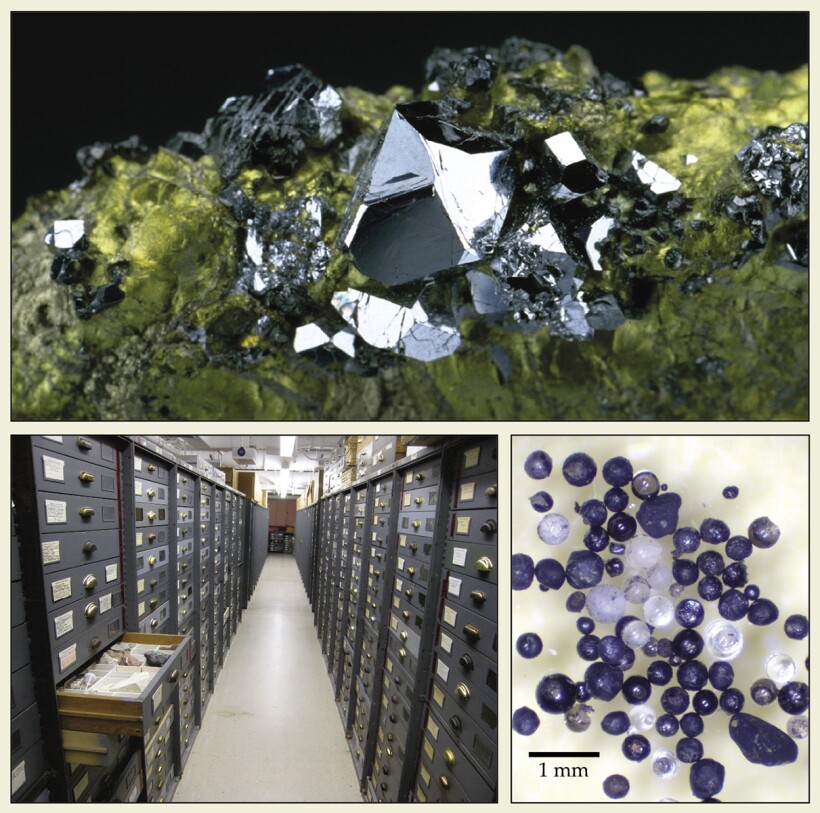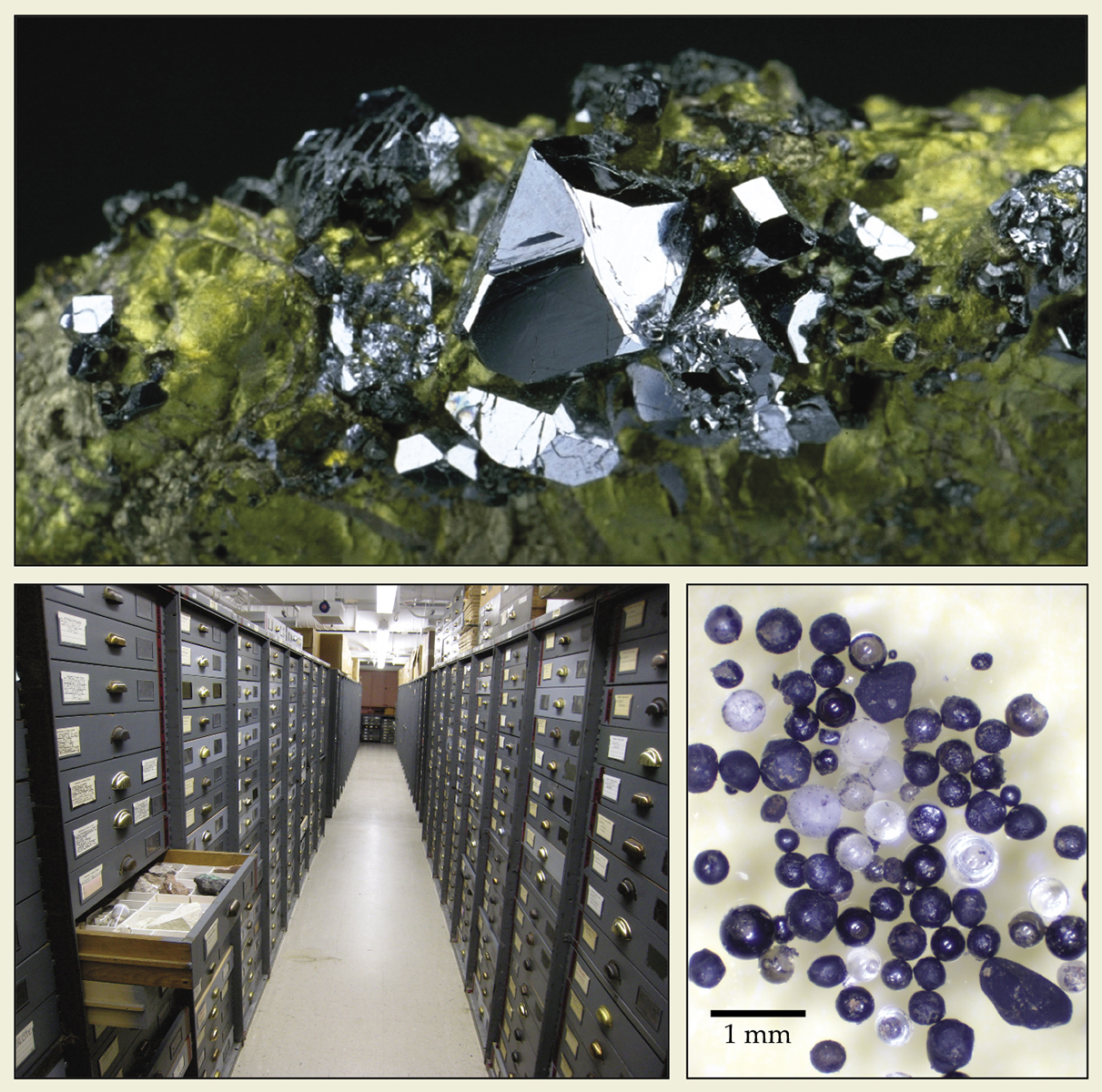Minerals and meteorites: Searching for new superconductors
DOI: 10.1063/PT.3.2378
For more than a quarter century, scientists have been trying to identify new high-temperature superconductors. Mostly, the search consists of calculations, simulations, and tweaking known superconducting materials in an attempt to achieve more desirable properties. Now two teams of physicists are taking a brute-force approach: They are looking for signs of superconductivity in vast numbers of existing materials that were formed under extreme conditions.
As part of a larger search for new superconductors, Johnpierre Paglione and colleagues at the University of Maryland, Iowa State University, and Lawrence Livermore National Laboratory are measuring the magnetic susceptibility of minerals from the Department of Mineral Sciences at the Smithsonian Institution’s National Museum of Natural History. “The types of chemical bonding in the compounds that show high-temperature superconductivity [are] akin to what is found in many mineral compounds,” Paglione says. Another attraction of examining existing samples is that the process of exploratory synthesis is bypassed. “If we find a natural mineral that is superconducting,” says University of Maryland physicist Richard Greene, “it might give us guidance for synthesizing.”

Sperrylite, or platinum arsenide (top), may be superconducting under pressure (photo by Chip Clark, Smithsonian Mineral Collection). Scientists were first tipped off to that possibility by a sample from the Smithsonian Institution’s mineral collection (bottom left; photo by Jeff Post). They then synthesized the mineral for extreme-pressure studies. A separate empirical hunt for new superconductors involves testing micrometeorites (bottom right) and other materials (photo by Susan Taylor, US Army Cold Regions Research and Engineering Laboratory).

More than 375 000 samples are in the Smithsonian collection. As a first pass, the scientists are choosing dark, lustrous minerals and developing algorithms to aid their sample selection. “It’s an empirical approach guided by some physical and chemical principles,” Paglione says. The collection is available for research and has been used mainly by geoscientists and materials scientists. “What’s different in this case,” says curator Jeffrey Post, “is that because of the scale, it’s become a real collaboration.”
The Maryland team cools mineral samples a few cubic millimeters in size down to 2 K and then scans up to room temperature for a key signature of a superconductor: the Meissner effect, which repels an applied magnetic field. The team can test one or two samples a day; a dedicated magnetometer system scheduled to arrive this fall will speed up the process.
Ivan Schuller leads the other team at the University of California, San Diego; he and his colleagues are testing micrometeorites, meteorites, lunar and Martian rocks, and samples from deep under the sea. They use a modified electron spin resonance apparatus to spot superconductivity. The researchers stick very small samples in a microwave cavity and measure the absorption as they scan the temperature and slowly oscillate the magnetic field. “If we find something with a transition above 200 K, or between 30 K and 40 K, where to the best of my knowledge there are no known superconductors, then we know we have something,” says Schuller. “But at or below 10 K, it could be contamination.” The method, he claims, gives his team an edge: “We can detect minuscule amounts—10−12 cubic centimeters—of a superconductor embedded in nonsuperconducting materials. And it’s fast. In one hour we can scan from room temperature to helium temperature.” Schuller’s group has looked at more than 1000 samples.
So far, neither group has hit pay dirt, although both have discovered unexpected signatures of magnetic order—even in minerals with no magnetic components. “We are primarily looking for superconductors, but other exotic phases of matter are found through serendipity,” says Paglione.
Harold Weinstock, a program officer for the US Air Force Office of Scientific Research, says he is funding the mineral and meteorite projects because “we need to look everywhere to find higher-temperature superconductors or superconductors that can support very high magnetic fields. It might lead to magnets which can provide dense energy storage. That would be very valuable.”
In doing an empirical search, Schuller says, “We are not making a haystack with a needle in it”—an analogy for synthesis attempts to create a new superconducting material—“we are looking for a needle in existing haystacks.”
More about the Authors
Toni Feder. tfeder@aip.org
